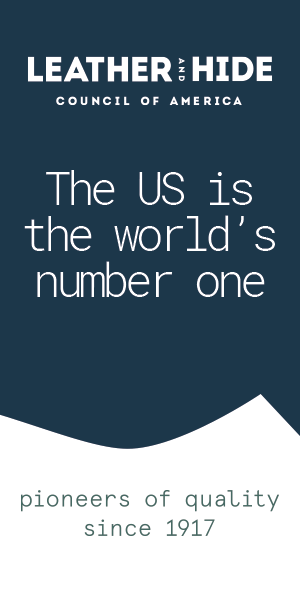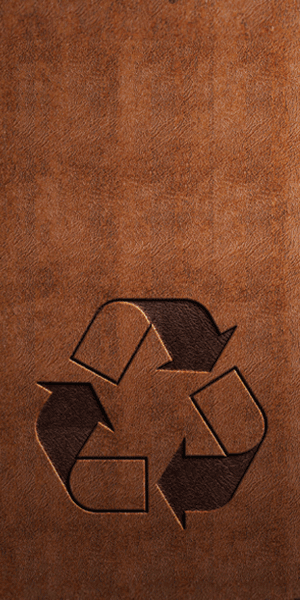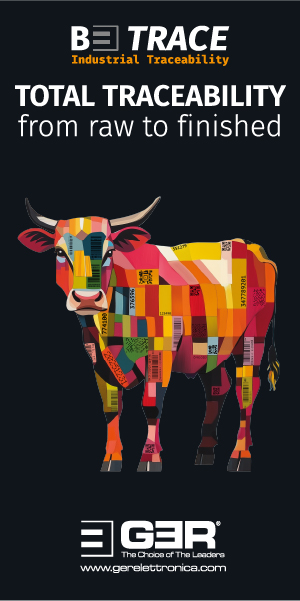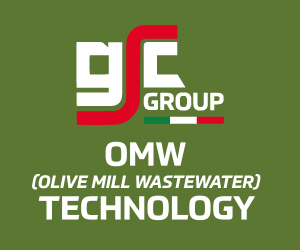The needle moves

The director of marketing at UK-based leather manufacturer Pittards, Debbie Burton, took up the role of chair of industry campaign group Leather Naturally in July 2022. She had previously been head of its communications team.
How do you expect 2023 to go for Leather Naturally?
Well, the economic situation is tough and life feels serious, but we see the needle beginning to change in terms of opinion and receptiveness towards leather and we are really well placed as an industry to take advantage of this. We normally talk about our strategy for the year ahead in April, when we have our annual general meeting, but this year, in these times, we thought that we would go against this and decided to make some announcements at the end of January about what we are going to do. The audience seems more willing to listen, so we wanted to go early with the strategy. We looked at everything we have done so far and decided that what we will do now is take a very targeted approach to communicating with consumers (by which I mean consumers of information about leather), with brands and with the industry.
Who is that audience? Who are these consumers of information about leather?
It can be students, journalists, people that buy stuff, the general public; that’s who I mean. We have activity based around those people, creating targeted communications, in a reactive and a proactive sense, for them. When you don’t have millions and millions of pounds to spend, targeting is really important. The Leather Naturally website is part of the reactive communications strategy, and this is supported now by paid search. We have invested in that because it’s really important in forming our relationship with those groups of people. We studied what people were reading on the website and what they were searching for. We wanted to understand what they were having conversations about and what it was about leather that they wanted to know. As a result, we have rebuilt the site, rewriting the content to chime with the search terms that people were using. We’ve done this to be part of their conversations about leather.
Which of the outcomes from that work surprised you?
One surprise was that there aren’t all that many questions that people ask about leather. On our homepage, we have 10 frequently asked questions. Those came from the research we did. Essentially, everything boiled down to 10 questions, and five of those were the most searched. The second thing is that we got some push-back from the industry for using consumer language, including terms such as ‘vegan leather’. We don’t use it because we like the term. We don’t like it. But we think it’s appropriate to use it because it comes up in the questions that consumers are asking. And when they come to that page on our website, the first thing they will see is that there is no such thing as ‘vegan leather’. But we have used that term; if we want to answer consumers’ questions, we have to use terminology they use. We can take the high ground and insist on using terms such as ‘alternative materials’ instead, but that’s not what people type into Google. And when they do search for answers to their questions about leather, we want ours to be the first answer they see. We don’t want them to find instead an answer from someone who will tell them that the vegan material is amazing and that they should use it instead of leather. I think this comes down to understanding consumer attitudes. You can’t lecture consumers. You have to understand what it is they want to know. We have articles that address the questions they are asking and we have invested a little bit of money in paid search to make sure ours are at the top of the answers people see when they search.
What has this analysis shown you about the content of your website?
We know from our paid search data that we have an 8% click through. In the terms of digital, a 2% clickthrough would be good; 8% is phenomenal. We also know that anyone who comes to the website through a resource we launched last year, Leather Truthfully, spends three times longer than the average person consuming the content. So these are people who are really engaged. We tested it and we know they read down to the bottom of the page; they come and they stay. When the flurry of controversy around leather’s score on the Higg Index began in 2020, Leather Truthfully was already in the planning, so it was very timely. We created this really simple platform, highlighting key questions and giving the answers in a simple way. And if readers want more detail, we give them a link where they can learn more.
What impact will this have on Leather Naturally’s efforts to communicate on social media?
It will mean a slight change in some of the postings we will put out on social media, plus continuing with Leather Truthfully. I’m excited about this because it is coming at a time when people want to consume less, use things for longer, repair things and so on. There is an emotional part of the argument that we think we can tap into here. We are in a moment in which lots of people want to do better for the planet, be more responsible and reduce their impact. We have this opportunity now to engage with them, without lecturing them, to help them understand how leather can be part of the journey they are trying to take. We have that moment now and we will be using our social media to offer content that can be helpful.
In what ways will your strategy help brands?
The second pillar of our strategy focuses on brands, on how we can engage with them better and how we can help them with their messaging about leather. One thing we learned from research we did with Leather UK in 2021 is that consumers really trust brands. For this reason, we published a leather-making guide last year, masterminded by Luis Zugno, head of innovation at chemicals group Buckman. It is really a lifetime of knowledge and work distilled into this incredible document. And we think it will be useful for brands and retailers. If they want to educate people working in their stores about leather, they can give them this concise version of the whole process. This is a conservative estimate, but we think that it has been downloaded about 5,000 times. It’s available in various languages and we intend to increase that. We are giving the brands a tool, something that's written in really simple language and has great photos.
It sometimes seems that, no matter how many times or how emphatically the leather industry makes certain points, or how much it bases what it says on science, the message does not reach influential commentators, including journalists, film-makers and prominent people in the fashion industry. What stops the message from hitting home?
I think it’s hard, but we see some progress; we see consistent, organic growth of visitors to the website. We’ve served up half-a-million pages of content and we have established some good relationships. Leather Truthfully has helped with this too because we have also used it as a place for journalists in the hope of starting a conversation with them and developing a relationship. We’ve seen what happens when we send off furiously worded responses to articles: no one publishes a correction. We knew it was unlikely that the Leather Truthfully initiative would lead to a world-changing story overnight. Rather than that, the intention was to create long-term relationships with important journalists working for important publications, journalists who write about this stuff. We just did an audit of all the media with which this has helped and the combined audience of those platforms is about 100 million readers. We got a platform with Business of Fashion, which, I think, a few years ago, would have been unthinkable. We had a very in-depth article with Forbes and we had a great interview in Monocle. But it’s not ‘one and done’. It can’t be; it has to be an evolving relationship. And we’ve seen this work already. What we will do this year is evolve that campaign. We will use the narrative of leather’s longevity and evolve it in line with what we are doing on social media.
You mentioned at the beginning that Leather Naturally also wants to take a targeted approach to communicating with the industry. What does that involve?
Last year we established March 30 as ‘World Leather Day’, a moment in time when we could all share positive messages about leather. We create shared social media posts, content that members can use. Not every company has someone to do social media posts of their own so we give them content that they can translate if they need to and use for themselves. We plan to create more of that shareable content. We want Leather Naturally to be a source of trusted content, and ‘trusted’ is really important. That’s why I spend time working out how much time people spend on our website and for how long they engage with the pages. When people spend a long time looking at your pages, Google starts to trust you. And again, when you don’t have millions and millions of pounds to spend on a campaign you need that trust to move to the top of the search results. We know our Google trust rating is going up. It takes more than 2,000 hours of volunteer time to run the Leather Naturally campaign and we are making things happen. Think what we could achieve if more people in the industry, double or triple the people taking part now, could become involved.
How would you sum up the contribution that Metcha made to Leather Naturally?
Think about what it was for. It was conceived as a way to reach a Gen Z and millennial audience, people less likely to use leather or understand where leather comes from, but more likely to want longevity and be concerned about their environmental impact. Did it achieve that? Yes. I think it was a really positive example of how the industry came together and decided it wanted to fund a campaign to address those issues. By the time it ended, in 2022, it had an audience of 4.5 million and was working with influencers and collaborators who had an additional combined audience of 21 million. It got the word ‘leather’ mentioned 1.2 billion times online and 79% of its audience were Gen Z and millennials. That’s in keeping with what it set out to do. It did exceptionally well against its brief.
What in your opinion prevents the leather industry from achieving greater unity?
I find it fascinating, and I don’t have an easy answer. After 15 years in the leather industry, I think I still view it sometimes as a little bit of an outsider. One thing I find is that there is not one person in the leather industry who is not passionate about it. You can’t work in the leather industry and not be passionate about it. This is what caught me. I had a background in product and development for sports brands. At the time, Pittards wanted someone to launch their technologies into the sports market and they figured they could teach me about leather. I arrived for the first day and they put me in the effluent plant. I spent a month finding out how the tannery worked, and I was utterly engaged with it. You find people with so much knowledge, you could never hope to get it all out of their heads. It’s really compelling. People are passionate about it, and everyone is unified in that passion. The only thing I would venture, again with my slight outsider’s hat on, is that leather is such a versatile material; it feeds into many different segments: footwear, furniture, apparel, automotive, to name just a few. All markets go through their own cycles, which perhaps brings the focus more onto that individual segment and not on leather as a whole. What we need is always to have an eye on the bigger picture as well. I would optimistically say that realising it is the first step to fixing it, and we are doing that. Reflecting on what Leather Naturally has been able to do with its current membership numbers, thanks in no small part to those volunteer hours (which means most of the funds can be spent on making things happen), it strikes me that we could do a great deal more if more companies were to join.
Debbie Burton, chair of Leather Naturally.






























